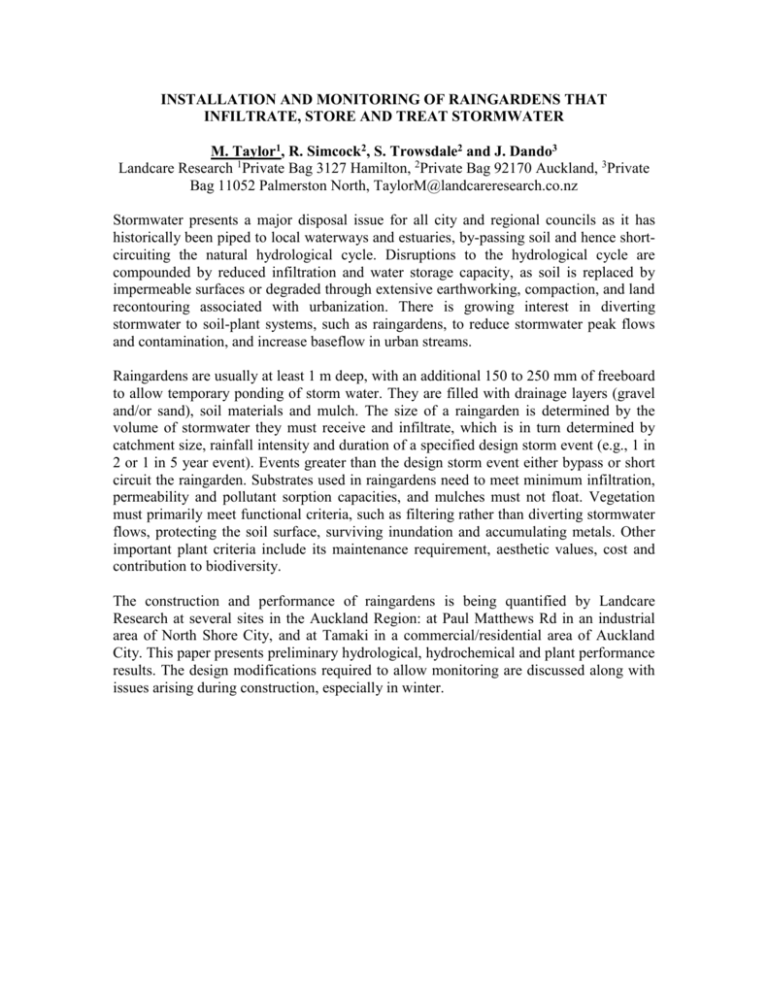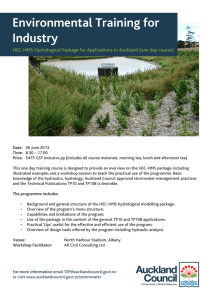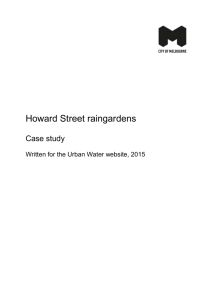installation and monitoring of raingardens that infiltrate, store and
advertisement

INSTALLATION AND MONITORING OF RAINGARDENS THAT INFILTRATE, STORE AND TREAT STORMWATER M. Taylor1, R. Simcock2, S. Trowsdale2 and J. Dando3 Landcare Research 1Private Bag 3127 Hamilton, 2Private Bag 92170 Auckland, 3Private Bag 11052 Palmerston North, TaylorM@landcareresearch.co.nz Stormwater presents a major disposal issue for all city and regional councils as it has historically been piped to local waterways and estuaries, by-passing soil and hence shortcircuiting the natural hydrological cycle. Disruptions to the hydrological cycle are compounded by reduced infiltration and water storage capacity, as soil is replaced by impermeable surfaces or degraded through extensive earthworking, compaction, and land recontouring associated with urbanization. There is growing interest in diverting stormwater to soil-plant systems, such as raingardens, to reduce stormwater peak flows and contamination, and increase baseflow in urban streams. Raingardens are usually at least 1 m deep, with an additional 150 to 250 mm of freeboard to allow temporary ponding of storm water. They are filled with drainage layers (gravel and/or sand), soil materials and mulch. The size of a raingarden is determined by the volume of stormwater they must receive and infiltrate, which is in turn determined by catchment size, rainfall intensity and duration of a specified design storm event (e.g., 1 in 2 or 1 in 5 year event). Events greater than the design storm event either bypass or short circuit the raingarden. Substrates used in raingardens need to meet minimum infiltration, permeability and pollutant sorption capacities, and mulches must not float. Vegetation must primarily meet functional criteria, such as filtering rather than diverting stormwater flows, protecting the soil surface, surviving inundation and accumulating metals. Other important plant criteria include its maintenance requirement, aesthetic values, cost and contribution to biodiversity. The construction and performance of raingardens is being quantified by Landcare Research at several sites in the Auckland Region: at Paul Matthews Rd in an industrial area of North Shore City, and at Tamaki in a commercial/residential area of Auckland City. This paper presents preliminary hydrological, hydrochemical and plant performance results. The design modifications required to allow monitoring are discussed along with issues arising during construction, especially in winter.










![This article was downloaded by: [University of California Davis]](http://s2.studylib.net/store/data/010782098_1-2e3a165d8f07df15f9c0793317bb99cf-300x300.png)